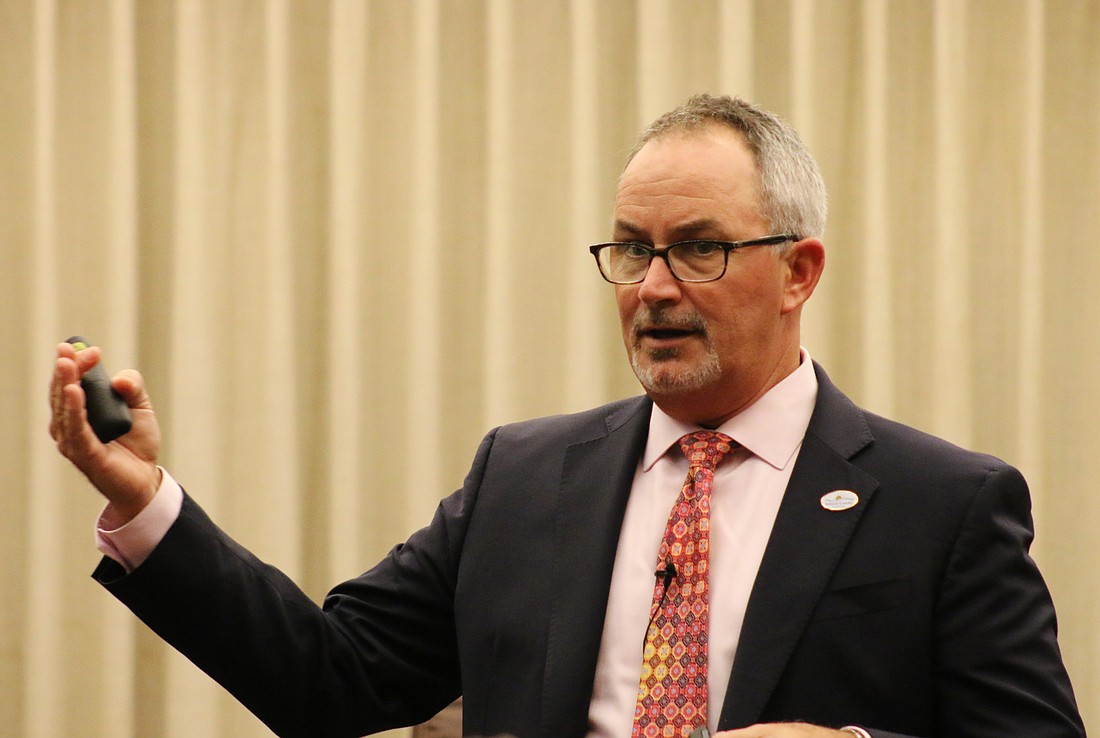- April 25, 2024
-
-
Loading

Loading

The message to the council from the majority of the people who attended Volusia County's impact fee workshop in Daytona Beach on Tuesday, Oct. 30, was crystal clear: Raise the impact fees.
"Act on it," said Mary Anne Connors, former deputy county manager. "Act now."
This was the last of four workshops held throughout the county to inform residents of the results of the county's new thoroughfare impact fee study, which was presented to the County Council on Oct. 2, and recommended it raise impact fees by up to 241% in some land uses. Raised impact fees following Duncan Associates' study recommendation could bring in a little more than $6 million in revenue to the county, although most members of the council said this wouldn't solve all of Volusia's infrastructure needs.
Though impact fees have been adjusted for inflation in the last 15 years, rates are currently based on a 2003 study. The County Council in 2007 had an opportunity to update fees but voted against doing so due to the economic climate. In 2011, it also suspended certain residential fees for two years; those fees were reinstated over a three-year period.
Clay Ervin, county director of Growth and Resource Management, said even if impact fees are adjusted by December, they wouldn't be in effect until 90 days later, per state requirement. Ervin outlined how impact fees (which are used as a local government funding source for new and expanded public facilities) were calculated, and the inability for them to fund the county's extensive thoroughfare road needs, which also has to do with the number of existing impact fee credits.
Port Orange resident Tom Valley, who works at a development firm, said that they understand impact fees are needed, but should the council choose to raise them, he asked for the council to stagger them versus "shocking the system."
“When they say ‘they’ will build a road, or ‘they’ will pay for things, it’s a developer that has to go at risk for long periods of time with great sums of money," Valley said.
The importance of the impact fees is not in the dollars generated, said Connors.
“It is absolutely critical in terms of fairness," Connors said. "The funding resources for road construction, infrastructure in this county, are simply not adequate to the needs — the needs as they exist today, the needs as they’re going to exist in the future.”
Public input from all the workshops held in the last week will be presented before the council at its meeting on Nov. 13, where it will decide what to do next.
Ormond Beach City Commissioner Dwight Selby asked if impact fees could be adjusted based on home value. He has recently been studying the topic because he was looking into developing some workforce housing Ormond Beach, with home values between $150,000-$175,000. Selby said in Ormond, impact fees based on the current rate would generate $12,000 per house, regardless of the home's value.
Impact fees account for 8% of the total cost for a $150,000 home. In contrast, impact fees only make up 0.5% of a $2 million home.
“Impact fees are incredibly regressive," Selby said. "They really kill the poor, especially in housing.”
Despite other speakers expressing a similar sentiment, Deputy County Attorney Jamie Seaman said calculating an impact fee based on home value is not possible, as impact fee calculations are based on trips generated. A cheaper home and a million-dollar mansion generate the same 10 trips, she said.
However, the county has looked at the possibility of calculating impact fees based on the number of vehicles per house.
Connors said that until the county addresses impact fees, there will never be a broad support to install a new half-cent sales tax, which after the county rallied all 16 municipalities to support a referendum, the council stopped in May because of an unprecedented OPPAGA audit requirement and the lack of an impact fee discussion.
But while impact fees and a half-cent sales tax could complement each other, raising impact fees is not the total solution to funding Volusia infrastructure, Ervin said. Impact fees can only be used for brand new roads and expansions on the county's thoroughfare road network. If enacted, a half-cent sales tax would have generated about $42 million to fund road maintenance, water projects and other infrastructure needs in both the county and individual cities.
“They’re two different animals," Ervin said.
Selby said the county needs to raise impact fees so the dialogue for a half-cent sales tax can be reinstated.
Daytona Beach resident Ann Ruby felt the half-cent sales tax would affect the poor more, and called it regressive. Others repeated Connors sentiment that impact fees would have to be raised before residents could ever consider voting for a half-cent sales tax.